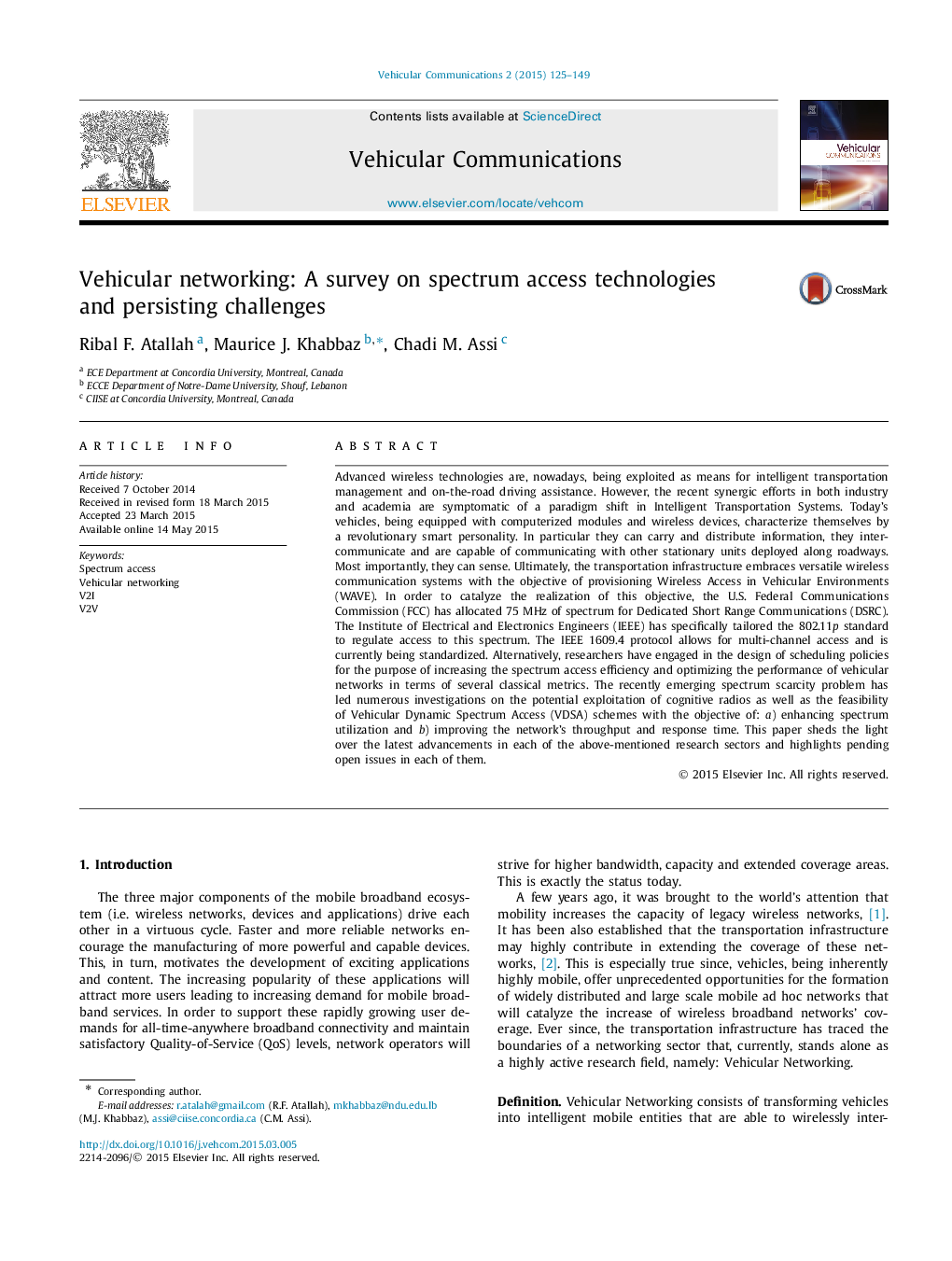| Article ID | Journal | Published Year | Pages | File Type |
|---|---|---|---|---|
| 466947 | Vehicular Communications | 2015 | 25 Pages |
Advanced wireless technologies are, nowadays, being exploited as means for intelligent transportation management and on-the-road driving assistance. However, the recent synergic efforts in both industry and academia are symptomatic of a paradigm shift in Intelligent Transportation Systems. Today's vehicles, being equipped with computerized modules and wireless devices, characterize themselves by a revolutionary smart personality. In particular they can carry and distribute information, they inter-communicate and are capable of communicating with other stationary units deployed along roadways. Most importantly, they can sense. Ultimately, the transportation infrastructure embraces versatile wireless communication systems with the objective of provisioning Wireless Access in Vehicular Environments (WAVE). In order to catalyze the realization of this objective, the U.S. Federal Communications Commission (FCC) has allocated 75 MHz75 MHz of spectrum for Dedicated Short Range Communications (DSRC). The Institute of Electrical and Electronics Engineers (IEEE) has specifically tailored the 802.11p standard to regulate access to this spectrum. The IEEE 1609.4 protocol allows for multi-channel access and is currently being standardized. Alternatively, researchers have engaged in the design of scheduling policies for the purpose of increasing the spectrum access efficiency and optimizing the performance of vehicular networks in terms of several classical metrics. The recently emerging spectrum scarcity problem has led numerous investigations on the potential exploitation of cognitive radios as well as the feasibility of Vehicular Dynamic Spectrum Access (VDSA) schemes with the objective of: a) enhancing spectrum utilization and b) improving the network's throughput and response time. This paper sheds the light over the latest advancements in each of the above-mentioned research sectors and highlights pending open issues in each of them.
